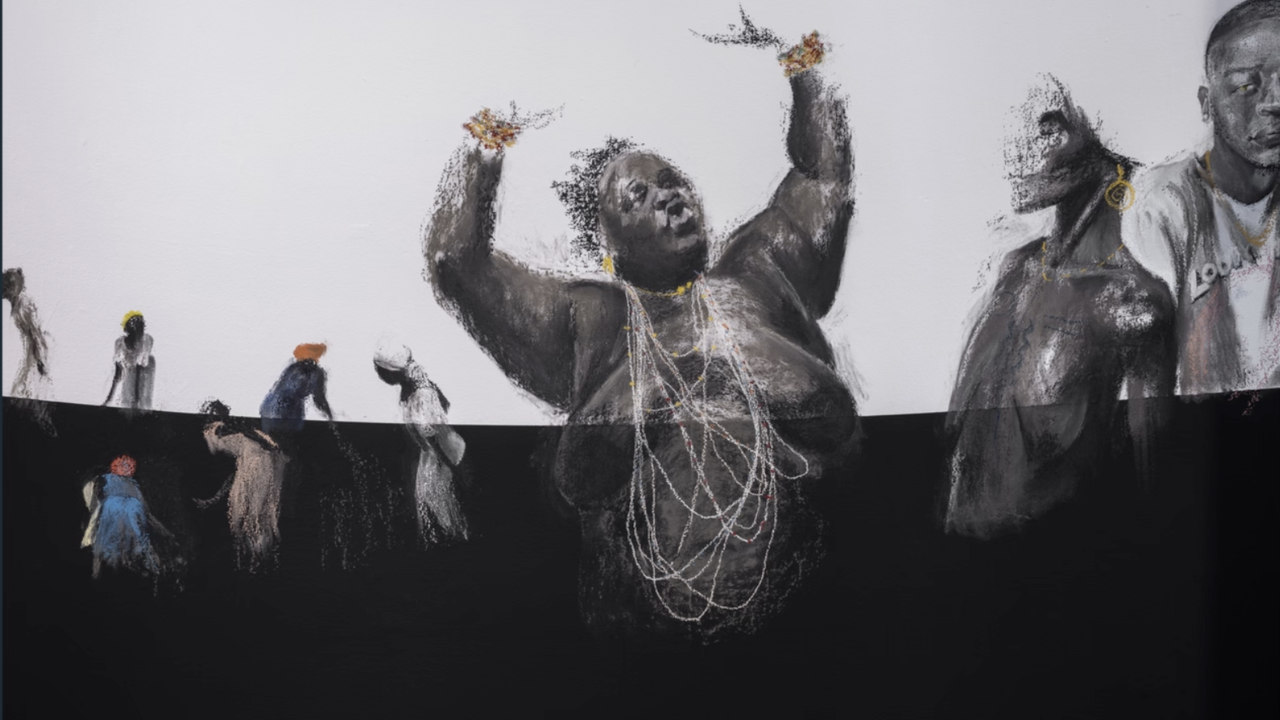
Robert Draws – Nnena Kalu’s Turner Prize journey marks a significant moment in contemporary art. The Glasgow-based artist has been nominated despite complex support needs. Her nomination challenges traditional narratives in the art world. Kalu’s work centers on dynamic patterns and large-scale installations. These installations often use recycled materials to create impactful messages. The artist highlights disability inclusion through her creative process. This recognition celebrates her unique perspective and innovative art forms.
Nnena Kalu’s art defies conventional boundaries by focusing on recycled materials. She transforms discarded objects into dynamic patterns and installations. Her work embraces sustainability and environmental awareness. Kalu’s process reflects an innovative reuse of resources in art. Each piece carries a story about transformation and resilience. She uses color, texture, and form to engage audiences deeply. Her installations invite viewers to reconsider waste and value in society. This approach challenges viewers’ expectations of contemporary art.
“Read about: Breaking Boundaries: Marlene Dumas’s ‘Miss January’ Sells for $13.6M”
Kalu’s nomination draws attention to artists with disabilities in the mainstream art scene. She challenges the marginalization of disabled artists through her visibility. Inclusion becomes a vital theme in her practice and public reception. The Turner Prize nomination sends a powerful message about representation. It encourages broader acceptance of diverse artistic voices. Kalu’s success opens doors for other artists facing similar challenges. Her journey redefines what it means to succeed in contemporary art. This progress highlights the importance of accessibility and support in the arts.
The dynamic patterns in Kalu’s work symbolize movement and change. These patterns create visual rhythms that captivate the viewer. Large-scale installations offer immersive experiences that challenge spatial norms. Kalu’s art transforms exhibition spaces into environments for reflection. The use of recycled materials adds layers of meaning to her pieces. Audiences experience a fusion of form, material, and message. This fusion promotes discussions on sustainability, identity, and creativity. The scale of her work emphasizes the importance of visibility and presence.
Kalu challenges traditional art narratives by integrating disability and sustainability themes. Her work pushes the boundaries of what art can represent. She creates new dialogues about value, identity, and community. Kalu’s practice encourages inclusivity in the art world. Her art invites viewers to rethink preconceived notions about ability and creativity. The Turner Prize nomination highlights her influence on contemporary art discourse. Her voice becomes part of a larger conversation about diversity. This engagement enriches the cultural landscape globally.
“Read more: Creative DIY Home Decor: Personal Touches on a Budget”
Critics praise Kalu for her innovative use of materials and concepts. Her installations receive acclaim for their emotional depth and social relevance. The nomination raises awareness about the importance of disability inclusion. Public response celebrates her ability to connect art with activism. Educational programs often accompany her exhibitions to deepen understanding. These programs foster conversations about disability, sustainability, and creativity. Kalu’s work inspires both emerging artists and established figures. Her journey motivates a broader rethinking of art’s social roles.
Nnena Kalu’s Turner Prize journey marks only the beginning of wider recognition. She continues to create impactful works that challenge societal norms. Her influence encourages institutions to prioritize inclusivity in their programs. Future projects may expand on themes of ecology, identity, and community. Kalu’s approach sets a precedent for integrating social issues into art. She inspires new generations to explore creativity beyond traditional limitations. The art world increasingly embraces her vision and methods. Her journey exemplifies resilience, innovation, and artistic excellence.